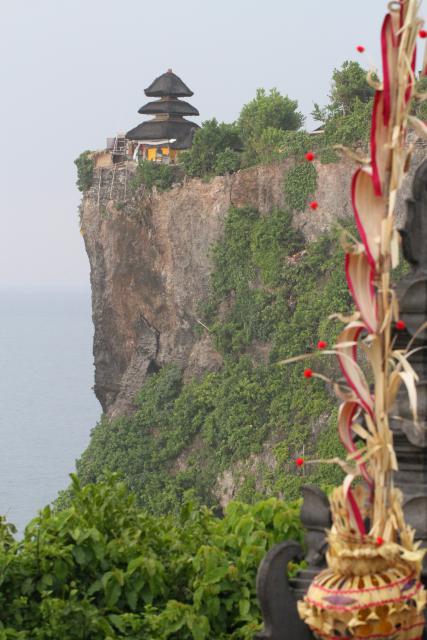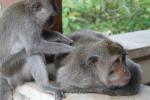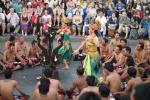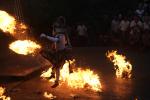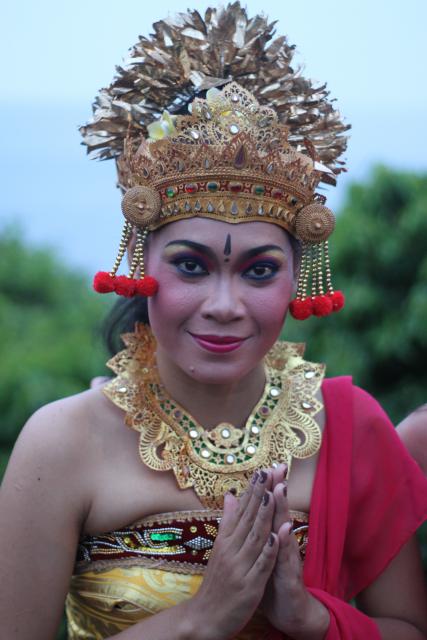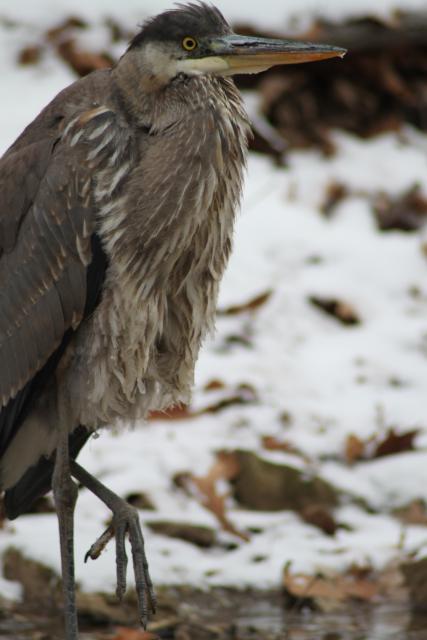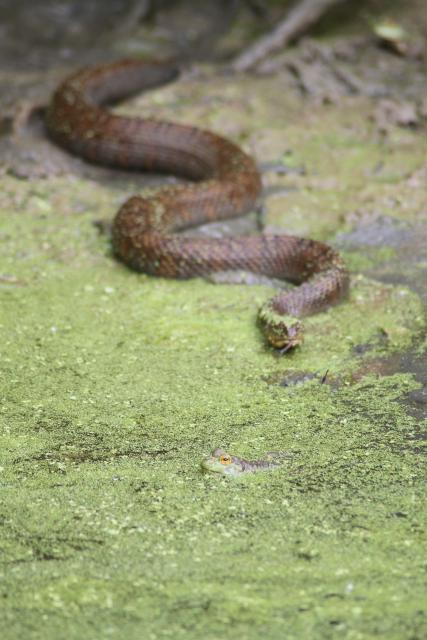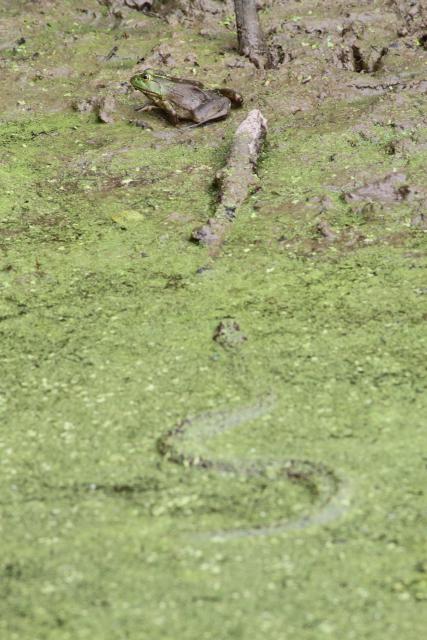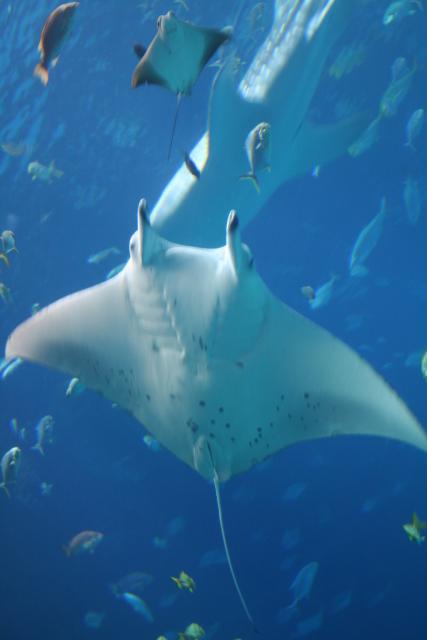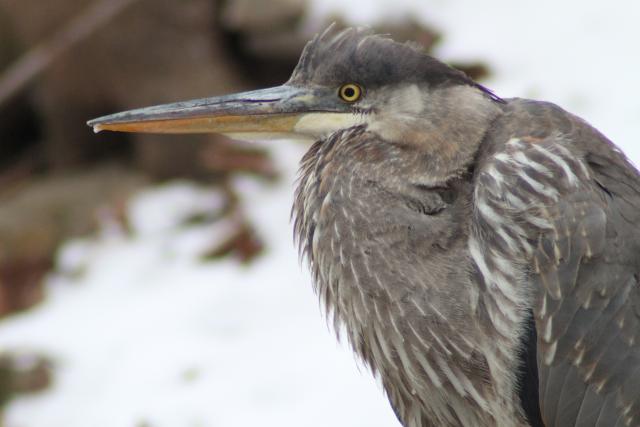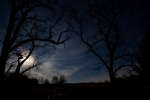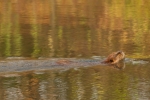wildlife
Bali: Uluwatu Temple & Kecak Fire Dance
ktuli — Wed, 02/09/2011 - 21:03
I'll be deviating from the normal method of doing things for the photos from this trip. There are far too many photos and too much background information for each photo to try posting them individually. The posts will likely be longer than normal, but will likely contain more photos and less technical discussion (though there will still be some - this is a photography site after all!)
Our trip began in Bali, Indonesia after a total of 28 hours of travel time and a 13 hour timezone adjustment. We got into Denpasar in the wee early morning hours on Jan 22nd, made our way to our hotel - the Puri Santrian resort (perhaps more on that in another post) - and crashed for a few hours. We spent the morning and afternoon lounging around the hotel, some folks hopped into the beautiful pool, while Anya and I strolled the grounds taking photos (of course!).
Towards late-afternoon, we headed off to the beautiful Uluwatu Temple (Pura Luhur Uluwatu). Uluwatu is a directional temple in Bali's south-west region which is meant to guard Bali from evil spirits. The temple sits up at the very edge of a 250 foot cliff that overlooks the Indian Ocean.
One of the major residents of the temple are monkeys. And apparently, these are thieving monkeys. The general setup is this: Tourists come, monkeys steal stuff from tourists, tourists buy fruit from vendors, tourists bribe monkeys with fruit to get their stuff back. Luckily we didn't have anything stolen, though Brigette apparently almost lost a fistful of hair when a monkey attempted to steal her hair band.
After visiting the temple and taking in the view from the cliffs, we proceeded to the Kecak Dance (or Ramayana Monkey Chant, or Fire Dance) nearby. The Kecak Dance is kind of interesting as it was basically invented by a couple westerners as a way to present some Balinese culture in a way that would appeal to westerners' limited tastes.
As usual, mouse over the thumbnails for the larger image to display.
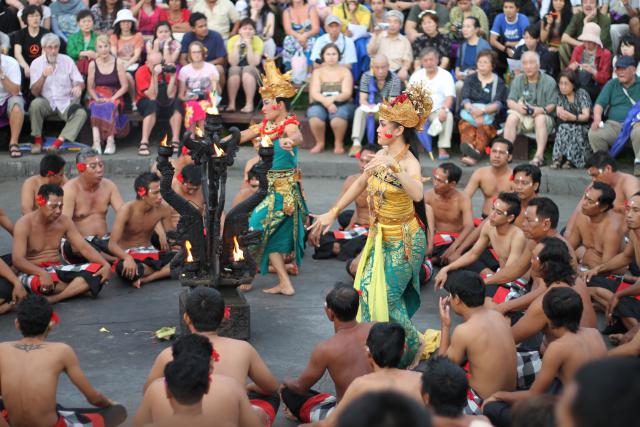
The dance consists of a circle of men who chant all of the "music" for the dance (visible in the shot second from the left above). They repeat a few sounds over and over, sometimes alternating sounds between different sections of the group. There are no musical instruments or spoken words to the story depicted in the dance, so the chanting provides the rhythm and marks the important events in the story.
At the end of the dance, they set up a bunch of piles of what I thought was shredded coconut husks and set them on fire, and the monkey character then gets to kick them around (as depicted in the shot to the far right). It wasn't quite what I expected when I was told we were going to a "fire dance" - I think I was thinking of something more Hawaiian with a guy twirling a flaming baton, but this was still entertaining and impressive.
For the dance (and whole trip), I was limited in the lenses I was able to use. I switched between the Canon EF 50mm f/1.8 II and my new Canon EF 100mm f/2.8L Macro IS USM. I wanted the wide apertures (f/1.8 and f/2.8) to help with faster shutter-speeds given the twilight and then dark conditions. Also during the dance, I switched to automatic ISO mode, to allow the camera to select higher ISOs to also allow for faster shutter-speeds. I found that I took a good deal of photos in a vertical orientation (see below) as a way to both capture more of the character's full costume as well as a way to eliminate clutter and unnecessary elements (ie: spectators). If you're interested in any of the specific technical data for any shots here, simply post a comment and I'll provide them.
I am not going to go into the roles of each character, but provide some photos of each. Above there is a photo with two characters who basically provided comic relief, and I swear the one looks like Predator! Others include the Monkey, a bird of some sort, and others (see below). The costumes were really interesting, and you can see my usage of the vertical format to be able to isolate a single character.
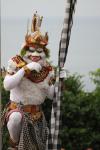 |
|
|
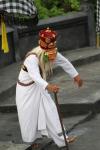 |
||
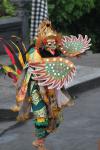 |
||
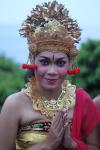 |
The last photo there - of the one female dancer - is Anya's favorite of this set. The wide aperture (f/1.8) on the 50mm lens used provides the nice soft background. Additionally, the vertical format allowed me to isolate the woman in the shot while she was flanked by tourists, all pushing to get their own photos alongside the performer.
Given the dim lighting and general disarray and constantly moving subjects, all of these shots came out fantastic. So remember the lessons here. Shorten your exposure time (faster shutter speed) as much as possible by (1) using as wide of an aperture as possible, (2) if your camera works well at high ISOs, switch to auto-ISO mode. Additionally, remember that sometimes the vertical format will help you to eliminate distracting elements from your photos, so rotate the camera and see what you can get.
- Bill
Happy New Year
ktuli — Sun, 01/02/2011 - 21:20
On New Years Eve, Anya and I took a trip to the Pittsburgh Zoo. The nice weather and the holiday meant that the place was swarming with hundreds of kids, so we didn't get as many good shots as I wanted, but I did get some nice ones of the lions.
Technical Data: Canon EOS 7D, Sigma 150-500mm f/5-6.3 APO DG OS HSM at 500mm, 1/100 sec at f/6.4. OS Mode 1. ISO 200. No post production. Pittsburgh Zoo and PPG Aquarium.
Why This Photo: The two lions were enjoying the warmer weather and were interacting with the crowds a bit while resting on their heated rock.
What Works: The eye contact with the lioness and the catch-light in the eye of the male lion are good aspects to draw in the viewer's attention, with sharp focus in the areas that need it most but a soft defocused background to reduce distractions. The placement of the male lion's head rests right on one of the thirds hot-spots.
What Doesn't Work: The lioness's paws just barely break the edges of the frame, and the dark tree trunk in the background is a little distracting behind the lioness's head. And perhaps the shot would have been better with eye contact with both lions.
The other thing we did on Friday was pick up the equipment necessary to take the 7D diving with us during our upcoming trip to Indonesia, so I'll be posting some about that here in the coming days. However, I will need to prepare for the trip, and get as much practice in with the new rig as possible, so posts might be a little slow for a while.
Regardless, thanks for stopping by, and here's hoping you had a safe and happy new year's eve/day and that 2011 treats you well!
- Bill
Great Blue Heron
ktuli — Thu, 11/11/2010 - 20:18
I'm working on details for a photo trip out to Cedar Creek Park this weekend with some friends, which had me looking through some other photos from previous trips to this park.
I have another shot of this great blue heron (Ardea herodias), but this wider crop works nicely too.
Technical Data: Canon EOS 7D, Tamron 70-300mm f/4-5.6 Di LD Macro1:2 at 300mm, 1/390 sec at f/5.7. ISO 320. No post production. Cedar Creek Park, Westmoreland County, PA.
Why This Photo: I stumbled on this guy while wandering through the park on a very cold December 30th last year. I instantly switched to my Tamron 70-300 telephoto (my longest lens at the time) and worked on slowly and quietly moving into good position - take photos all along the way.
What Works: For a handheld shot at 300mm, the focus is pretty sharp - especially on the face of the bird. The positioning of the bird's foot gives a bit of a sense of motion as the bird was wading along the stream.
What Doesn't Work: Despite being nicely blurred, the background is still fairly confusing with brown (dirt and leaves) and white (snow) and can be somewhat distracting. Also the crop cutting out the other foot is somewhat unsettling (the same can be argued for the rest of the bird's body, but doesn't seem as bad).
It is kind of unfortunate that I managed this shot in December when the heron did not have its namesake nice blue color, but I wasn't about the pass up the opportunity because of something like that. We saw plenty of blue herons (and even a couple very beautiful green herons) this summer while kayaking, but I didn't have the SLR with me and the SeaLife DC1200 really isn't that functional for shots like this.
Let's hope I can come home with some more new good shots from one of my favorite parks (and hopefully the friends that go with me do too!).
- Bill
Giraffe Closeup
ktuli — Wed, 10/20/2010 - 20:59
Alright, having a rough week, and not doing so great being inspired for what to discuss. I do have a new project I need to start working on, but more on that later.
Sometimes, when I am not getting that inspiration, I rely on an episode of "What Hangs on Our Walls at Home". This one hangs upstairs in the set of zoo photos in the office.
Technical Data: Canon EOS Digital Rebel XT, Canon EF 80-200mm f/4.5-5.6 II at 200mm, 1/250 sec at f/7.1. ISO 400. No post production. Maryland Zoo, Baltimore, MD.
Why This Photo: I simply liked the direct shot of the giraffe's face - not an angle you can usually get, but because of the layout of this zoo, and some creative position, this shot worked out.
What Works: Like I said, the framing of the shot has a nice feel to it, seemingly engaging the giraffe's attention. The beautiful bokeh in the background keeps the focus on the giraffe and not on some distracting element behind it.
What Doesn't Work: The lighting isn't exactly perfect with both a strong side-light plus dappled like through an overhead tree. Perhaps waiting till the giraffe moved slightly would have worked, or maybe some fill flash (though I think I was too far away for fill flash to work). Also, the ear breaking the edge of the frame on the right side is one of my regular mistakes that I'm working on improving.
Shots in zoos are always challenging. I like to try and eliminate as many signs of the enclosure as possible - though I still come home with a ton of photos just for the sake of taking them. I think as I progress as a photographer, I am becoming pickier about what I capture, but I still like some of these older shots. They help to show how I've come along from those early days of automatic settings and plenty of flaws.
Perhaps some day I will have the money and time to go on safaris to get photos like this in the wild, but until then I still enjoy visiting zoos and coming home with photos like this.
- Bill
The Showdown (part 2)
ktuli — Thu, 09/16/2010 - 18:52
In case you were wondering - the frog from the other day managed to get away. So did this one...
Technical Data: Canon EOS 7D, Tamron 70-300mm f/4-5.6 Di LD Macro1:2 at 238mm, 1/130 at f/5. ISO. No post production. Beechwood Farms, Fox Chapel, PA.
It has been a while since I've left the critique up to you, so have at it. Leave me a comment and let me know what you think of this photo.
- Bill
The Showdown (part 1)
ktuli — Sun, 09/12/2010 - 18:40
Sorry - I've been lazy about posting recently. I've found that that tends to happen frequently when I have a batch of photos that I like but that all have a flaw of some sort.
This current batch was taken about a month ago at Beechwood Farms. This year, Anya has taken a shining to bird watching - we have about a hundred bird feeders in the back yard, we have several bird identification books and CDs, and we took a trip to Beechwood Farms as it is the local headquarters for the Audubon Society of Western Pennsylvania.
On the grounds was a small pond. It was covered in duckweed, and absolutely swarming with frogs.
And then, through the duckweed, I spotted this guy...
Now, before I get into details, let me explain a few things. First, I decided to travel light this day. I only took my Canon EOS 7D with the Tamron 70-300mm lens attached. While that lens is a nice (and inexpensive) lens, it doesn't have any kind of image stabilization, so working at the 300mm range is tough without a tripod.
Technical Data: Canon EOS 7D, Tamron 70-300mm f/4-5.6 Di LD Macro1:2 at 238mm, 1/32 at f/11.3. ISO. No post production. Beechwood Farms, Fox Chapel, PA.
Why This Photo: I had been snapping shots of the frogs for some time when I noticed this pair. The tension in the situation was palpable. You knew both were watching the other and waiting to see what would happen. I tried to capture that tension as well as the stealth of the snake's approach.
What Works: The composition is ok, but I was working with what I had at hand. I couldn't really reposition or remove any distracting elements. At first, if you're not sure what you're looking at, the snake is almost invisible. The focus is pretty sharp on the frog, despite being handheld at a fairly long focal distance.
What Doesn't Work: Though the composition was ok, it is also somewhat lacking. The frog facing out of the frame is somewhat distracting, and there are a great number of distracting elements. Also, the depth of field prevented sharp focus on both the frog and the snake at the same time - this shot was the compromise.
Like I said, I really like this set of photos, but there seems to always be at least one thing wrong with each shot.
I may continue to be a bit of a slacker with the posts for a little bit here. Tomorrow I start a photography class at CCAC. I signed up with a friend mainly as a way to start getting some real training. Since I've self-taught all the way up to now, I figured some real training to confirm some of the stuff I've picked up would be a good idea. After this class, I think I'll probably try to find another, and then another, and ... well, you get the picture (yeah - pun intended again!).
- Bill
Another Aquarium Photo
ktuli — Mon, 03/15/2010 - 20:40
Got a photo to share today from my small point and shoot camera.
It is still one of my favorite photos, and it goes along with yesterday's photo.

Technical Data: Canon PowerShot SD800 IS Digital Elph at 9.11mm, 1/20 sec at f/4, ISO Auto. No post production. Georgia Aquarium, Atlanta, GA.
I just love the silhouette of this whale shark with the rays of light shining around it.
It makes me want to go diving.
Soon.
- Bill
Let's Talk Convergence
ktuli — Sun, 03/14/2010 - 21:10
First off, this is not a great photo. It actually is a fairly bad photo. It has a major flaw with it.
Contrary to what this photo looks like, manta rays do not eat whale sharks (unless you're making a B rate sci-fi movie).
The problem with this photograph is known as a convergence or merging.
Basically, when I took this photo, I wasn't paying enough attention. My focus was all on the manta ray (and sadly even that isn't even in focus!).
I did not notice the whale shark entering into the background, and wait too long before tripping the shutter.
The result? A photo that makes it appear that the manta ray is trying to eat a whale shark. Trust me - like I said, that just doesn't happen. Both animals actually eat plankton, or basically small marine animals that aren't any larger than a quarter. Tiny shrimps and other small marine animals that float in the water.
I am going to make up some excuses for myself here...
First, all of the animals in the photograph are constantly moving - this is probably the biggest reason for convergences like this. When you have multiple subjects constantly moving and you are tracking to track one of the subjects, you sometimes lose track of the others and this can happen.
In addition, this photo was taken at the Georgia Aquarium's Ocean Voyager main viewing window. A 23 feet tall by 61 feet wide by 2 feet thick sheet of acrylic (currently the second largest aquarium viewing window in the world) in a darkened room. Multiple factors that all team up for difficult photography.
But in reality, none of these are excuses for converging subjects.
Keep an eye out for this in your own photos and try to avoid it. Definitely don't let it happen with stationary elements in your photos. It is distracting, and quite often ruins photos.
Technical Data: Canon EOS Digital Rebel XT, Canon EF-S 18-55mm f/3.5-5.6 II at 55mm, 1/15 sec at f/5.6, ISO 400. No post production. Georgia Aquarium, Atlanta, GA.
So enough beating up on my own photography for a bit... now I am going to babble a bit about the trip itself.
This particular visit to the aquarium was our second trip. The first time the aquarium did not have the manta ray. However, this second time, we were scuba certified, so we took advantage of the aquarium's Journey with Gentle Giants program.
Yeah, some might call it cheating, but Anya and I have gotten to swim with whale sharks, manta rays, hammerheads, and a ton of other stuff. And as fascinating as whale sharks are, I've always loved manta rays.
During our dive, there was a point at which the manta ray swam no more than a couple feet above me. I managed to roll over on my back and swim underneath it and watch as it glided through the water above me. Has they not had strict rules about touching the animals, I could have easily reached up and ran my hand along its belly.
On one hand, I wished I could have had a camera with me, but on the other hand, I am glad that I didn't so I could just experience the dive.
But underwater photography is something I'll be getting into more and more. Now if only someone would donate a couple Ikelite housings to the cause...
Ok - that is a long enough post for today. I'm going to wander off to look through a new Coral Reef photo book I bought over the weekend.
Enjoy the remainder of your weekend (or here's hoping your Monday is starting off smoothly).
- Bill
Playing with the New Toy
ktuli — Sun, 03/07/2010 - 21:34
We went to the zoo today. I really like zoo trips.
Today's trip was specifically to try out the new Sigma 150-500mm lens.
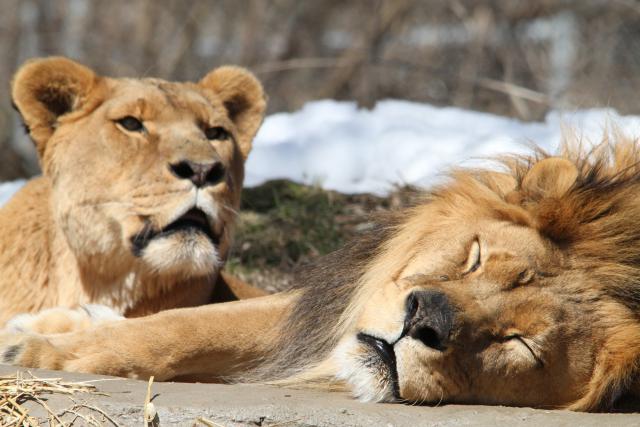
Technical Data: Canon EOS 7D, Sigma 150-500mm f/5-6.3 APO DG OS HSM at 500mm, 1/660 sec at f/12.9. OS Mode 1. ISO Auto. No post production. Pittsburgh Zoo and PPG Aquarium.
Not too shabby, huh? Ignore the focus, I was a bit off most of the day. But the reach of this lens was pretty nice. Being able to zoom in so close to subjects like the lions and tiger at the zoo was a big reason for picking up this lens.
And then I threw my 2x teleconverter into the mix.
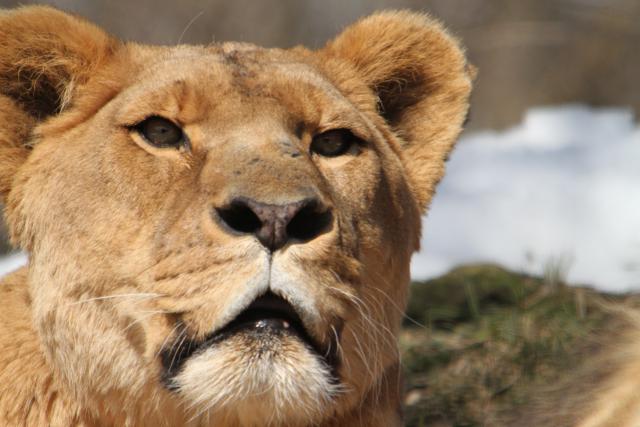
Technical Data: Canon EOS 7D, Sigma 150-500mm f/5-6.3 APO DG OS HSM at 1000mm with Kenko Teleplus PRO 300 "DG" AF 2x Teleconverter , 1/660 sec at f/12.9. OS Mode 1. ISO Auto. No post production. Pittsburgh Zoo and PPG Aquarium.
Pretty awesome, no?
The lens really needs to be tripod mounted at 1000mm, but I found that I was able to take some nice shots handheld at 500mm with the Opitical Stabilization turned on.
I had a nicer shot of the tiger, but it was when I was having even worse focusing issues. I really wish this set had come out nicer....
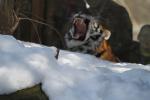 500mm |
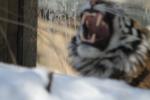 1000mm |
I have a couple more photos worth sharing from this trip, and maybe a bit more of my thoughts about my new lens. I was starting to think I was getting some buyer's remorse on this lens, but after today's trip, I think that is all gone now.
Now I'm looking forward to more zoo trips. So here's hoping the nice weather gets here soon so Anya and I can take some long weekend trips to other near-by zoos.
- Bill
Fun with Tele-photo Zooms
ktuli — Sun, 02/14/2010 - 21:58
Well, I finally pulled the trigger and bought a lens I've been looking at for quite some time. After tons of deliberation and waiting for our financial situation at home to cooperate, I've gone ahead and ordered what will be the largest and most expensive lens in my collection.
I'm talking about the Sigma 150-500mm f/5-6.3 DG APO OS (Optical Stabilizer) HSM AF Lens. I purchased it from Adorama Camera (they've quickly become my new favorite camera store) since they had a package deal that included a UV filter, lens cap leash (which probably won't get used), and lens cleaning kit (which will be the second one of those I'll have from them).
Anyway, back to the new toy I'm anxiously awaiting the delivery of... Let's take a moment to talk about why I selected this lens, and some of its features. The main reason for this lens was the extra reach that a 500mm lens will provide me. My main interests in photography is outdoor/nature photography and wildlife photography. The extra reach will help make a lot more shots possible.
The other major factor was price. Let's face it - at this point in time (and probably for quite a while) lenses like Sigma's $8000 "Sigmonster" are going to be way out of my price range. Canon's nearest lens is a 100-400mm lens, but still runs over $600 more. Maybe some day, but right now I have to work within my means (and even this is pushing the boundaries). Don't get me wrong, I'm sure this is still a fantastic lens worth every penny.
Once the lens comes in and I get a chance to play around with it a bit (perhaps with a trip to a zoo), I'll try and provide a bit of a review of it. Can't wait! For now, let's look at a photo from my current favorite telephoto zoom lens...
Technical Data: Canon EOS 7D, Tamron 70-300mm f/4-5.6 Di LD Macro1:2 at 300mm plus Kenko Teleplus PRO 300 "DG" AF 2x Teleconverter (I think), 1/390 sec at f/5.7, ISO Auto. No post production. Cedar Creek Park, Westmoreland County, PA.
Why This Photo: I happened upon this blue heron while wandering around Cedar Creek Park. Actually, he startled me the first time I saw him because he took flight as I hadn't noticed him and wandered fairly close to where he was, and so had to track him for a bit and sneak up on him to get close enough for this photo. I practiced approaching low and quiet and eventually managed to get to about maybe 20-25 feet from him (across a semi-frozen stream). After I was close enough, he actually allowed me to reposition fairly easily - I don't know if he was trusting me, was scared stiff, or if it was the cold that had him frozen in place.
What Works: The slow and stealthy approach coupled with a fairly long reach (600mm equivalent with the 2x teleconverter) allowed for a nice tight crop of the bird's head and shoulders. The relatively large aperture at f/5.6 provided a nicely blurred background. Focus is acceptable for the focal length and only being able to use a monopod.
What Doesn't Work: The snowy background is a bit blinding and actually produces a slightly distracting background. The exposure of the shot is a little over done and some loss of detail results - with all of the snow in the area reflecting every bit of light, I should have compensated a bit better for this by reviewing the histogram and retaking the shot. And though the focus is acceptable, it isn't perfect - the heron's eye is in focus and is fairly crisp, but looking at the feathers there is definitely some motion blur involved.
But did I mention that I ordered a new lens? And that new lens has Optical Stabilizer (Sigma's term for Image Stabilization)? I wonder just how much a feature like that might have helped this shot - though that really is no excuse for me not having my tripod with me and getting a properly focused shot.
Now... where is the UPS guy with my new lens?
- Bill

